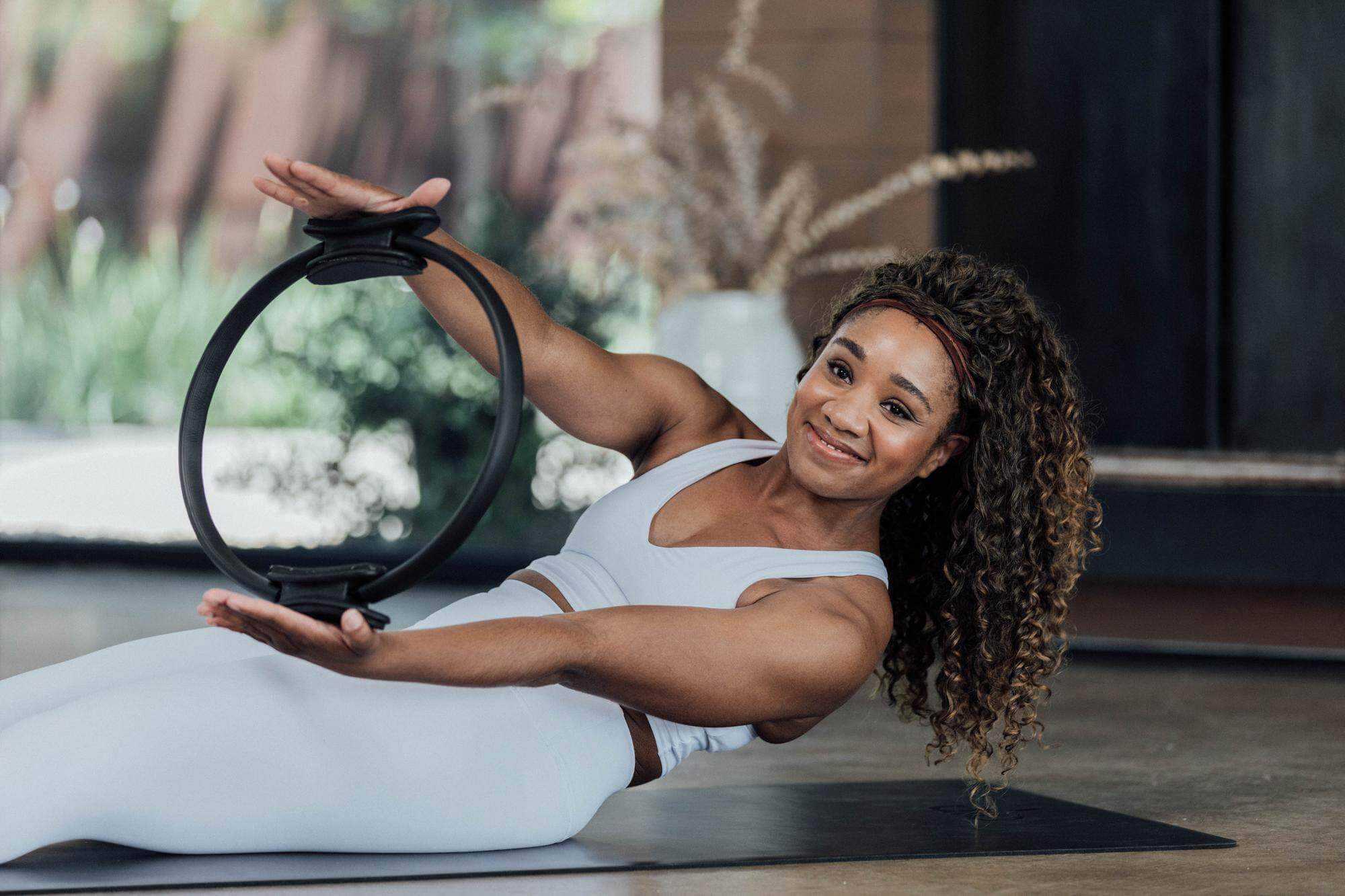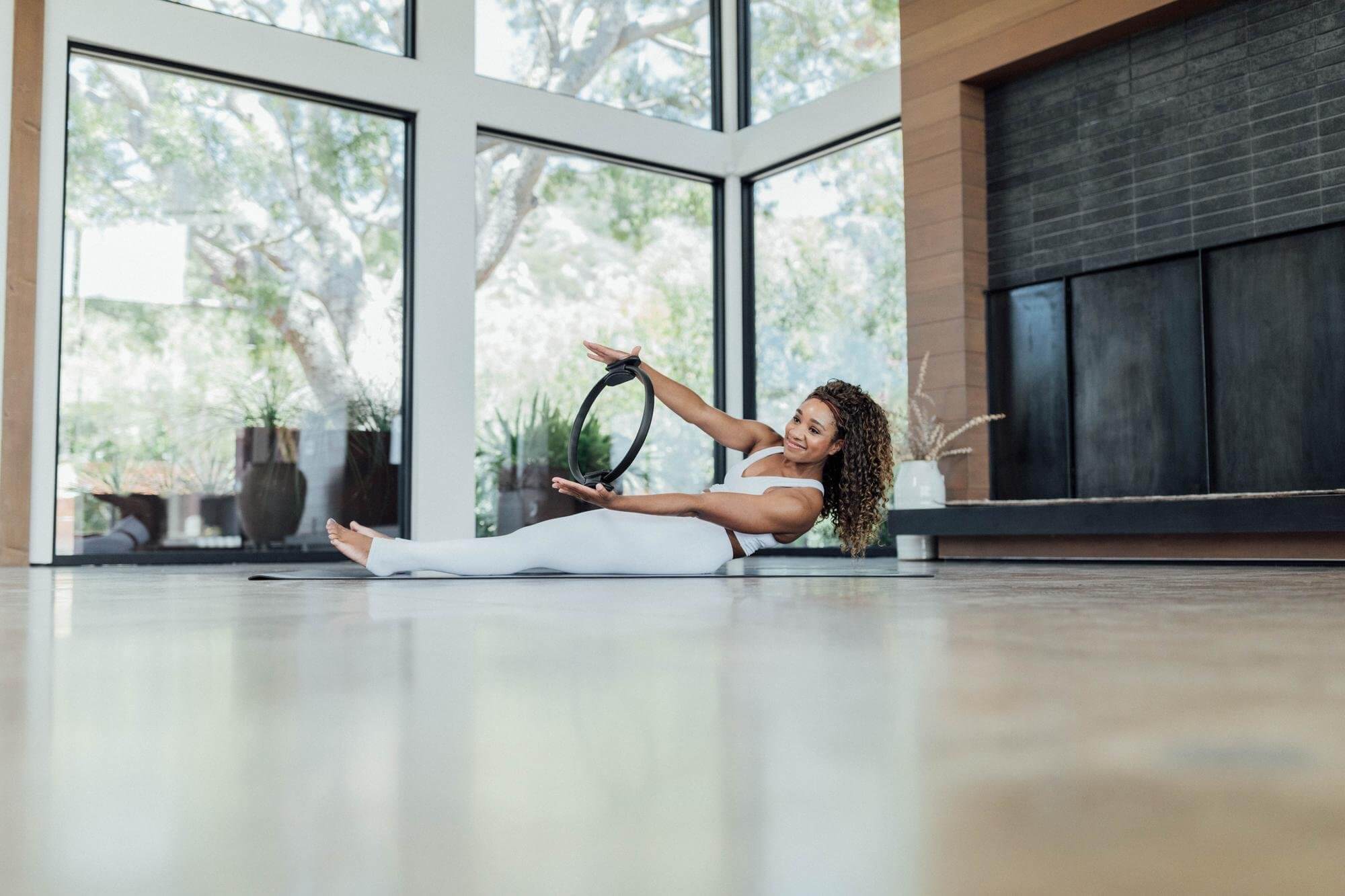Pilates has gained immense popularity in recent years, offering a full-body workout that can improve strength, flexibility, and balance. One of the joys of Pilates is the variety of equipment available to enhance your practice. Among these are the Pilates ring and the Magic Circle, both designed to aid in resistance training and improve your fitness experience. This article aims to provide a thorough comparison of the two, helping you decide which one best fits your needs.
Understanding the basics of Pilates rings
Before diving into the specifics of Pilates rings, it’s essential to understand what they are. Pilates rings are small, flexible circles typically made of plastic or metal with padded grips on either side. These rings are an excellent tool for adding resistance to exercises, allowing for deeper engagement of the muscles.
These rings can be used in various Pilates exercises, targeting different muscle groups effectively. Whether using them for traditional floor exercises or integrating them into a reformer routine, Pilates rings can enhance the intensity of a workout. Their versatility makes them suitable for practitioners of all levels, from beginners to seasoned enthusiasts, as they can easily be incorporated into any routine to challenge and refine one’s practice.
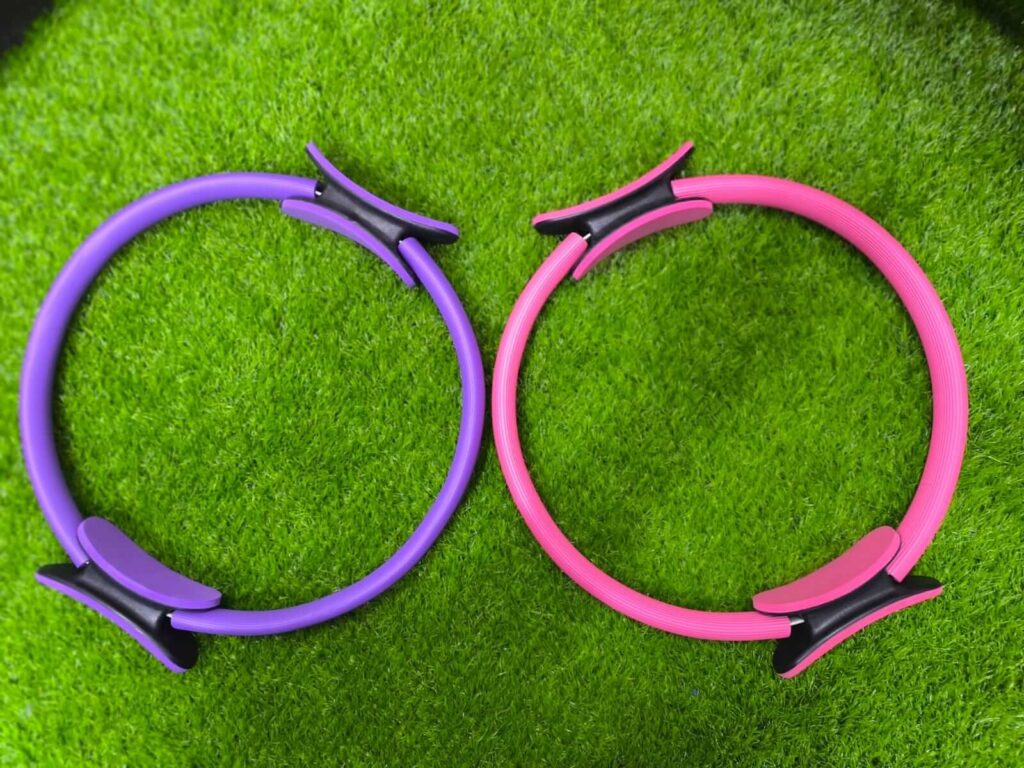
The design and functionality of Pilates rings
The design of a Pilates ring is deceptively simple, yet its functionality is versatile. Most rings have a diameter of around 35 to 38 cm, and they are designed to be lightweight and easily portable. The grips allow for comfortable handling, facilitating both upper and lower body exercises. This compact design means they can be conveniently stored or taken along to a gym or studio, making them an accessible option for those wishing to enhance their workouts.
Functionally, the rings are employed to create resistance, which can be adjusted by how firmly you press against them. This engaging of muscles provides a unique experience that can deepen your strength training and toning routines. Moreover, the rings can also serve as a visual cue for maintaining proper alignment during exercises, helping practitioners to focus on their form and technique, which is crucial in preventing injuries and maximising the benefits of each movement.
The benefits of using Pilates rings
One of the major benefits of using Pilates rings is their capacity to work on both strength and stability. When integrated into workouts, they encourage correct posture and alignment, essential components in any Pilates practice. This focus on alignment not only enhances the effectiveness of the exercises but also fosters a greater mind-body connection, which is a fundamental principle of Pilates.
Additionally, Pilates rings promote better muscle engagement in both lower and upper body workouts. They are particularly effective in working the inner and outer thighs, chest, and arms. By introducing these rings into your routine, you can achieve heightened muscle activation and improved endurance. Furthermore, the use of Pilates rings can also aid in rehabilitation and injury prevention, as they help to strengthen stabilising muscles that support joints, thereby enhancing overall functional fitness and mobility. This makes them an invaluable tool for anyone looking to improve their physical health and well-being.
Delving into the Magic Circle
The Magic Circle, often referred to interchangeably with the Pilates ring, has some unique characteristics that set it apart. This piece of equipment was developed by Joseph Pilates himself and has a slightly different focus regarding its use and benefits.
It is essential to explore what makes the Magic Circle special and why it has become a beloved tool among enthusiasts of the Pilates community.
The unique features of the Magic Circle
Magic Circles are typically similar in size to traditional rings but may have a different construction, often featuring more resistance. Made from a sturdier material, they are designed to last longer and provide a different experience in terms of muscle engagement.
Moreover, the Magic Circle often comes with slightly thicker padding on the grips, allowing for more comfort during exercises. This added comfort can be significant during long workouts, making it a favourite for many practitioners.
In addition to its robust construction, the Magic Circle is designed with an ergonomic shape that accommodates various body types and sizes. This thoughtful design ensures that users can maintain proper alignment and posture, which is crucial in Pilates. The ring’s ability to create a gentle resistance encourages users to engage their core muscles more effectively, enhancing the overall workout experience.
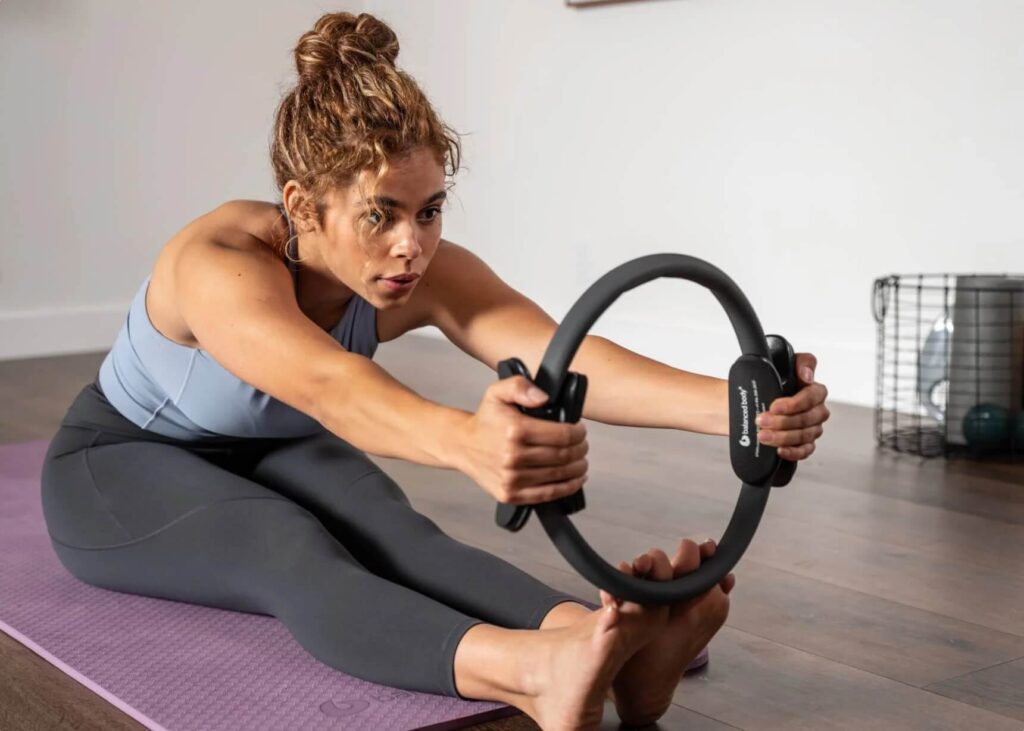
Why the Magic Circle is a favourite among Pilates enthusiasts
The appeal of the Magic Circle lies in its versatility and the nuanced workouts it enables. Pilates aficionados appreciate how the Circle encourages proper form while also allowing for a significant range of motion.
Furthermore, the Magic Circle enhances not only strength but also flexibility and stability. Many users report that they feel more engaged and stable during exercises, leading to better results in their overall Pilates practice.
Additionally, the Magic Circle can be incorporated into a wide variety of exercises, from mat work to reformer routines, making it an invaluable asset in any Pilates session. Its ability to provide feedback during movements helps practitioners to fine-tune their technique, ensuring that they are not only working hard but also working smart. This adaptability makes it suitable for everyone, from beginners to seasoned practitioners, as it can be adjusted to match the user’s skill level and fitness goals.
Comparing Pilates rings and the Magic Circle
Now that we have explored the individual characteristics of both the Pilates ring and the Magic Circle, it is crucial to compare their similarities and differences to make an informed decision.
Similarities between Pilates rings and the Magic Circle
Both the Pilates ring and the Magic Circle serve similar functions, primarily adding resistance to Pilates workouts. They both come in compact sizes, making them easy to store and transport, perfect for home workouts or classes.
In terms of design, the two are quite similar, typically made with lightweight materials and featuring grips for enhanced comfort. Users can incorporate both tools into their routines, targeting various muscle groups for comprehensive workouts.
Moreover, both the Pilates ring and the Magic Circle are versatile enough to be used by practitioners of all levels, from beginners who are just starting their fitness journey to advanced users looking to intensify their routines. This adaptability allows for a broad range of exercises, from basic resistance movements to more complex routines that challenge balance and stability. Additionally, both tools can be seamlessly integrated into mat work or reformer sessions, enhancing the overall Pilates experience.
Key differences that set them apart
While they share many similarities, the key differences between the two come down to the specifics of usage and construction. The Magic Circle tends to offer greater resistance and durability compared to traditional Pilates rings.
This enhanced resistance can lead to a more challenging workout, which some individuals may prefer. Additionally, the design features of the Magic Circle, including thicker grips, can lead to a more enjoyable user experience during extended sessions.
Furthermore, the construction of the Magic Circle often includes a more robust frame, which not only contributes to its durability but also allows for a wider range of resistance levels. This can be particularly beneficial for those looking to progress their workouts over time. In contrast, Pilates rings may be more suitable for rehabilitation or gentle workouts, where a softer touch is required. The choice between the two ultimately hinges on personal fitness goals and preferences, making it essential to consider how each tool aligns with one’s individual needs.
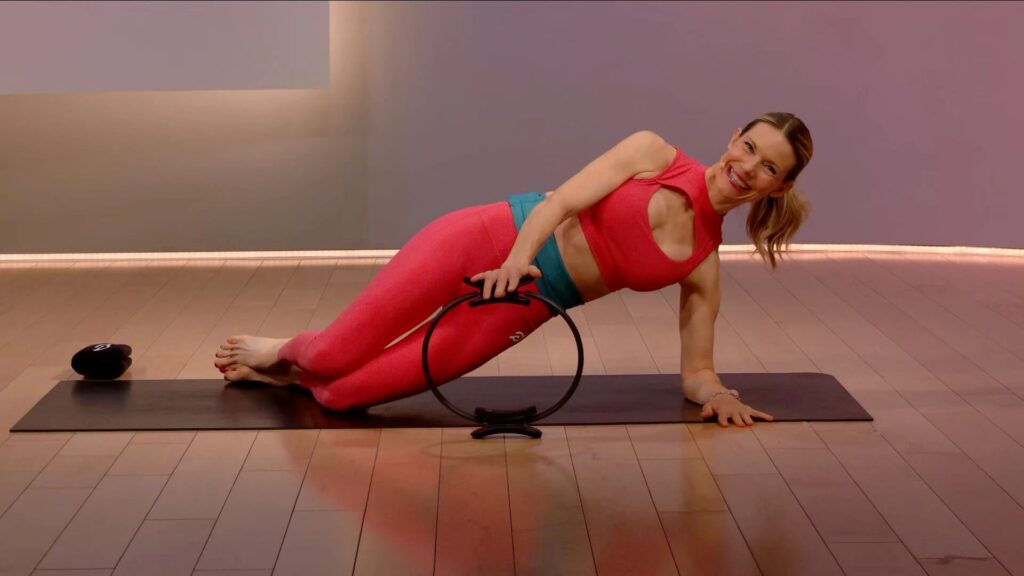
Factors to consider when choosing between Pilates rings and the Magic Circle
The choice between a Pilates ring and a Magic Circle is not just about personal preference; several factors can influence your decision. Let’s explore these key considerations.
Your fitness goals and how each tool can help
Think about what you hope to achieve with your Pilates practice. If your primary focus is on building resistance and strength, the Magic Circle may be the more suitable option, given its capacity for greater resistance.
If you are looking for an introductory tool with versatility for various exercises, a traditional Pilates ring may be more appropriate. Assessing your fitness goals will help guide your choice.
The impact on your budget
Budget is another crucial factor to consider. Generally, traditional Pilates rings are more affordable than Magic Circles, making them a popular choice for beginners or those looking to try out Pilates without a significant financial commitment.
In contrast, the Magic Circle, due to its specialised design, may come with a higher price tag. However, the investment may be worthwhile for those looking for a long-term addition to their workout routine.
The space you have available for workout equipment
The size and storage capacity of each tool should also factor into your decision. Both the Pilates ring and the Magic Circle are compact, but if you have very limited space, you may want to opt for the tool that best fits your environment and routine.
Additionally, if you are considering buying multiple pieces of equipment, factor in how each will fit within your available space, as this may influence your overall purchasing decisions.
Making the final decision: Pilates ring or Magic Circle?
Having explored the details surrounding both the Pilates ring and the Magic Circle, it’s time to make an informed decision. Consider your unique requirements, motivations, and preferences as you weigh the pros and cons of each option.
Assessing your personal preferences
Your personal preferences play a key role in your final choice. If you enjoy the simplicity and ease of use, a Pilates ring may resonate with you. However, if you favour advanced workouts with optimal resistance, the Magic Circle may be the better fit.
Reflecting on your preferences will not only guide your equipment choice but also enhance your overall experience with Pilates.
Taking your Pilates experience into account
Your experience level with Pilates can significantly influence which tool you choose. Beginners may find the traditional Pilates ring more accessible, while seasoned practitioners may appreciate the advanced resistance that the Magic Circle offers.
Consider how long you have been practising Pilates, what exercises you enjoy, and how comfortable you feel using specialised equipment, as these factors can help in making your selection.
Considering the long-term benefits of your choice
Lastly, think about the long-term benefits of your equipment choice. Investing in a tool that aligns with your fitness goals and preferences can lead to sustained motivation and consistent practice.
Whether you choose the traditional Pilates ring or the Magic Circle, both can effectively enhance your Pilates journey. Ultimately, the choice is yours, and taking the time to assess your options ensures that you make an informed decision that you can stand by for years to come.
Related: Pilates Ring Workouts How to Enhance Your Strength and Flexibility

